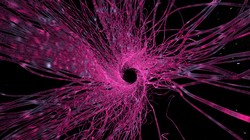Electrospinning for advanced nanofibre materials
Electrospinning is a process that creates nanofibres through an electrically charged jet of a polymer solution or melt. Although electrospinning requires a simple and economical set-up, it is an intricate process that depends on several molecular and processing parameters. Within the project NANOFIB (Nano fibrous materials - Structure, design and application), scientists leveraged advanced technologies to image and analyse the flow and mass transfer phenomena occurring on the micro- and nanoscales. The researchers then related them to the fibre properties and the chemistry of the polymer solution. The team placed strong focus on elucidating instability mechanisms that reduce the jet diameter from micrometres to nanometres, causing bending or stretching. Project scientists concluded that there is a sensitive equilibrium between polymer solution parameters, including surface tension, viscoelastic response, charge relaxation time and interfacial properties of the liquid nanofilaments, that maintains stability. In addition, they reported the shortest measuring time for polymer chains relaxing back to their equilibrium conformations. Theoretical research and experimental activities led to a number of breakthroughs. In particular, through electrospinning of hydrogels, scientists constructed nanofibres on length scales that would render them suitable for use in tissue engineering. In addition, scientists produced electrospun nanorods with metallic coatings that exhibit sideways self-propulsion in reactive solutions. They also showed that nanofibre alignment can lead to affordable superhydrophobic membranes for effective separation of oil and water. Electrospun fibres on the nanoscale can lead to different modes of interaction with other materials compared with macroscale materials, leading to innovative technology products. NANOFIB's research and breakthroughs generated fast progress in the state of the art.







